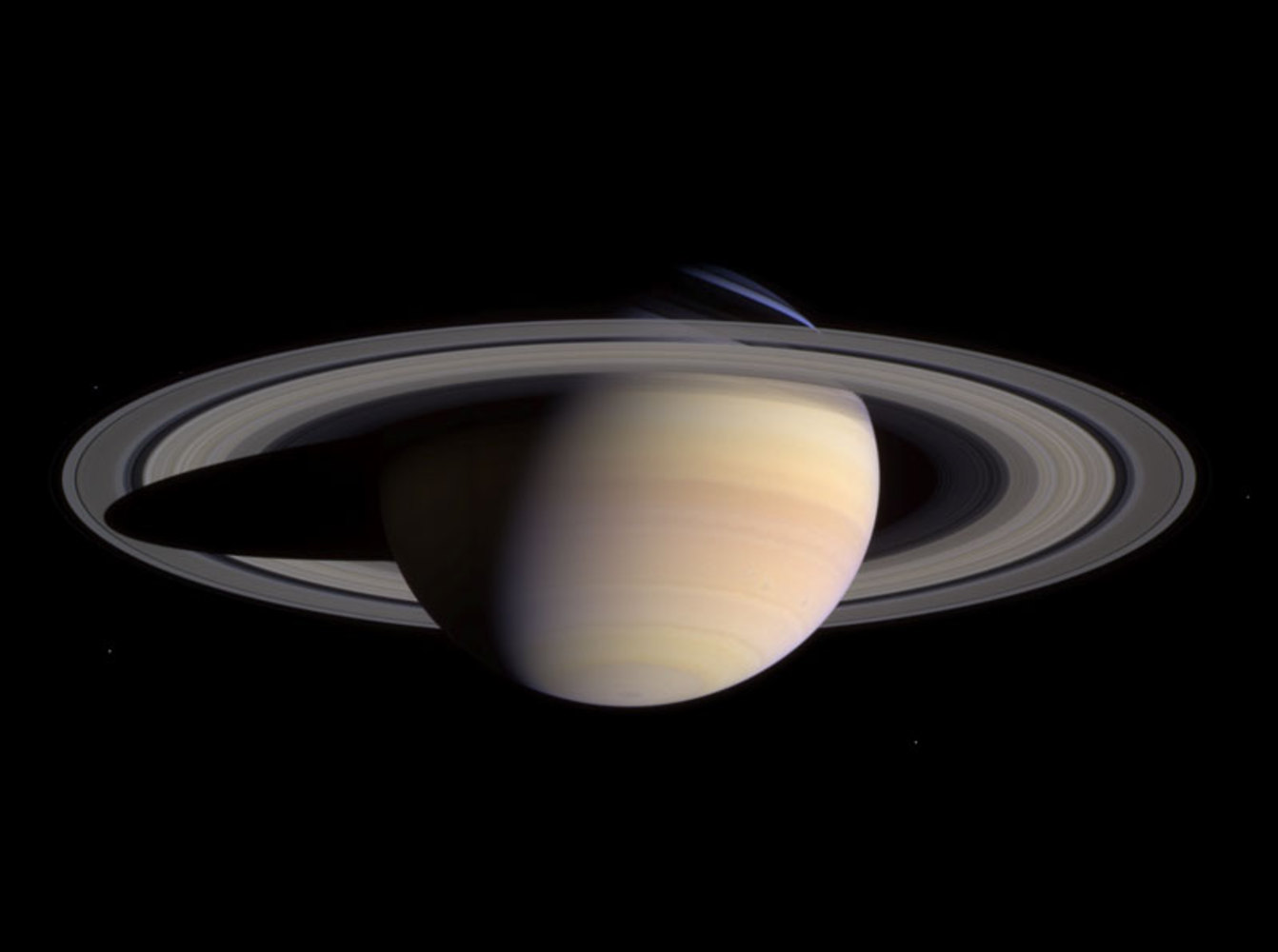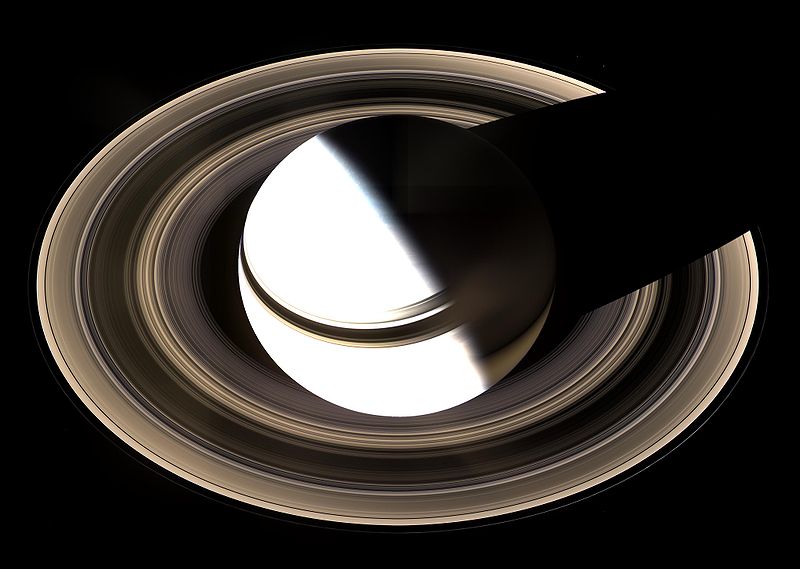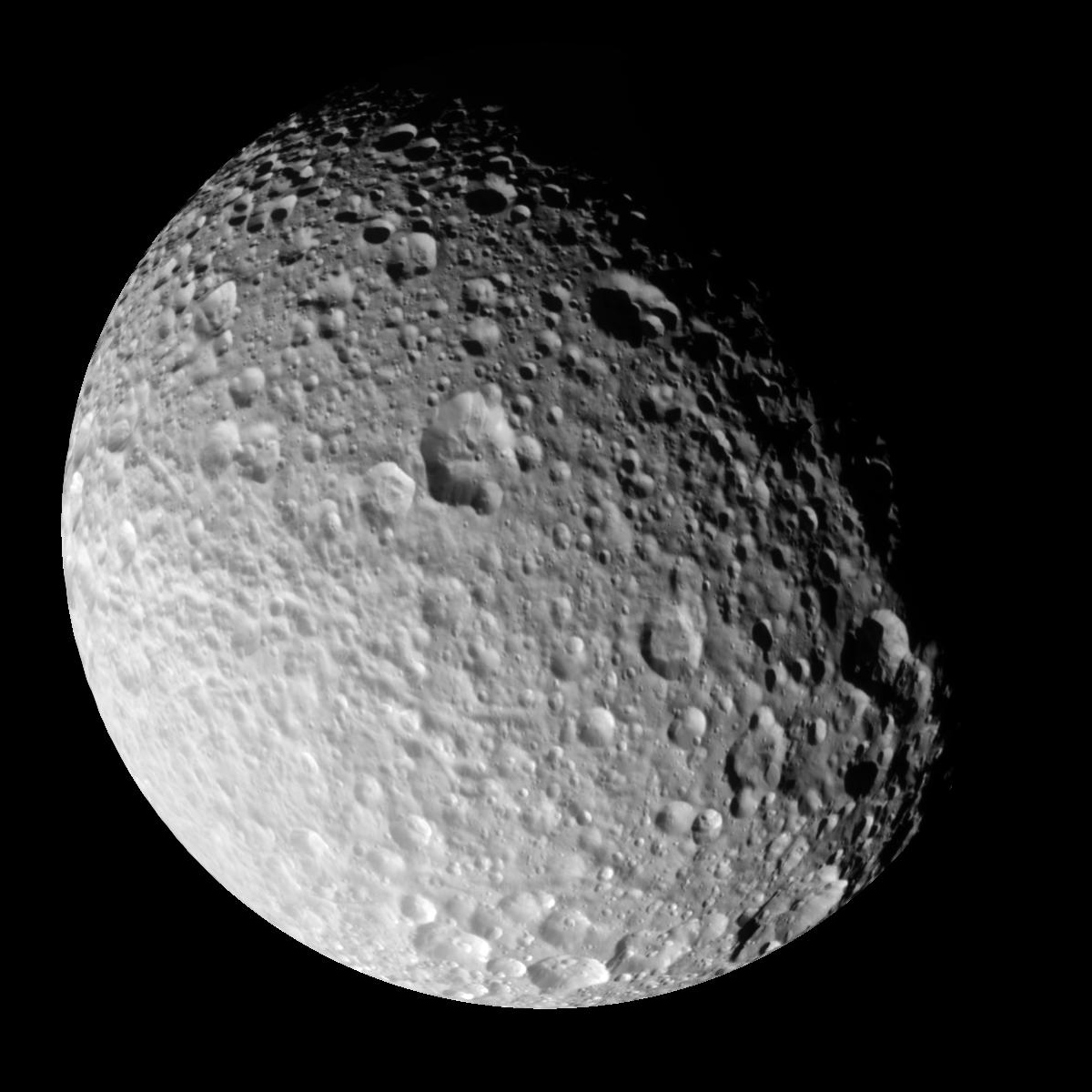Fact Impact: Saturn
Interview with
o Saturn is the second largest planet in the Solar Systemo Saturn is about 9.5 times wider than the Earth o You could fit about 850 Earths inside Saturno Saturn is the sixth planet away from the Suno Saturn is twice as far away from the Sun as Jupitero The mean temperature in Saturn's atmosphere is -125 degreeso It takes Saturn 29.5 Earth-years to orbit once around the Suno However, one day on Saturn only lasts about 10 and a half Earth-hourso Saturn has been visited by only four spacecraft, and 3 of these were just brief flybyso Pioneer 11 was the first spacecraft to fly past Saturn, in 1979o The Cassini spacecraft has been in orbit around Saturn since June 2004o It took Cassini 7 years to make the journey from Earth to Saturno It takes light about 84 minutes to travel from Saturn to the Earth
o You could fit about 850 Earths inside Saturno Saturn is the sixth planet away from the Suno Saturn is twice as far away from the Sun as Jupitero The mean temperature in Saturn's atmosphere is -125 degreeso It takes Saturn 29.5 Earth-years to orbit once around the Suno However, one day on Saturn only lasts about 10 and a half Earth-hourso Saturn has been visited by only four spacecraft, and 3 of these were just brief flybyso Pioneer 11 was the first spacecraft to fly past Saturn, in 1979o The Cassini spacecraft has been in orbit around Saturn since June 2004o It took Cassini 7 years to make the journey from Earth to Saturno It takes light about 84 minutes to travel from Saturn to the Earth
The Structure of Saturn...
 o Saturn is a gas giant, and is mainly made up of Hydrogen and Heliumo At the centre is a solid core made of rock and ice, that has about 5 Earth-mases of icy/rocky materialo The density of Saturn is lower than the density of water; it would float like an apple if you could find a pool large enough to hold ito Saturn's radius is 6,300km more at its equator than at its poleso The winds in Saturn's atmosphere can reach velocities of over 1,000 miles an hour near the equator
o Saturn is a gas giant, and is mainly made up of Hydrogen and Heliumo At the centre is a solid core made of rock and ice, that has about 5 Earth-mases of icy/rocky materialo The density of Saturn is lower than the density of water; it would float like an apple if you could find a pool large enough to hold ito Saturn's radius is 6,300km more at its equator than at its poleso The winds in Saturn's atmosphere can reach velocities of over 1,000 miles an hour near the equator
Saturn's Rings...
 o Saturn's rings were first observed by Galileo in 1610o Saturn's ring extend from 6,630 km to 120,700 km above Saturn's equatoro But they average less than about 100m in thicknesso The inclination of Saturn's rings change relative to the Earth, so sometimes we see them edge-on, and sometimes almost face-ono Saturn's rings reflect a lot of light - so when viewed edge-on, Saturn is almost half as bright as when the rings are face-on.o Saturn's rings are not solid, but are composed of many individual ringletso The rings are made up of billions of particles of ice and rock, ranging in size from dust grains to small boulderso Saturn's rings are made from the debris created when a small moon was torn apart by Saturn's gravity about 100 million years agoo Some very small moons of Saturn live in the gaps in the ring systemso Recently a colossal new ring was identified around Saturn, stretching 50 times further into space than the more familiar rings
o Saturn's rings were first observed by Galileo in 1610o Saturn's ring extend from 6,630 km to 120,700 km above Saturn's equatoro But they average less than about 100m in thicknesso The inclination of Saturn's rings change relative to the Earth, so sometimes we see them edge-on, and sometimes almost face-ono Saturn's rings reflect a lot of light - so when viewed edge-on, Saturn is almost half as bright as when the rings are face-on.o Saturn's rings are not solid, but are composed of many individual ringletso The rings are made up of billions of particles of ice and rock, ranging in size from dust grains to small boulderso Saturn's rings are made from the debris created when a small moon was torn apart by Saturn's gravity about 100 million years agoo Some very small moons of Saturn live in the gaps in the ring systemso Recently a colossal new ring was identified around Saturn, stretching 50 times further into space than the more familiar rings
Saturn's Moons...
 o Saturn has over 60 moonso ... but only 13 of these have a diameter of more than 50kmo And only 7 have enough mass to be sphericalo Saturn's largest moon, Titan, is the only moon in the Solar System to have a thick atmosphereo And it's larger than the planet Mercuryo We think some of the moons - such as Phoebe - are cometary nuclei captured into orbit around Saturn by its gravityo Mimas has a huge impact crater that is almost a third of the diameter of the moon across. If there were a crater of an equivalent scale on Earth it would be wider than Canada.o Titan has one of the richest stores of organic molecules in the Solar systemo Titan has rainfall cycle, with clouds, rivers, and lakes - not of water, but of methaneo Titan is the furthest celestial body on which we have landed a spacecrafto Huygens is now the furthest human-made object ever to land on a celestial body.o Enceladus has an icy surface, and reflects almost 100 percent of the sunlight that strikes it.o Ice jets erupt from under this icy surface and eject water vapour, gas and grains of ice into space hundreds of km above the moon's surfaceo We think these jets are fed by a large liquid body of water under the iceo These ice 'geysers' produce Saturn's faint but extended E ring.o Iapetus has one face that is almost as bright as snow, and another as dark as coalo Iapetus also has an unusual raised ridge around its equator that makes it appear like a walnut.
o Saturn has over 60 moonso ... but only 13 of these have a diameter of more than 50kmo And only 7 have enough mass to be sphericalo Saturn's largest moon, Titan, is the only moon in the Solar System to have a thick atmosphereo And it's larger than the planet Mercuryo We think some of the moons - such as Phoebe - are cometary nuclei captured into orbit around Saturn by its gravityo Mimas has a huge impact crater that is almost a third of the diameter of the moon across. If there were a crater of an equivalent scale on Earth it would be wider than Canada.o Titan has one of the richest stores of organic molecules in the Solar systemo Titan has rainfall cycle, with clouds, rivers, and lakes - not of water, but of methaneo Titan is the furthest celestial body on which we have landed a spacecrafto Huygens is now the furthest human-made object ever to land on a celestial body.o Enceladus has an icy surface, and reflects almost 100 percent of the sunlight that strikes it.o Ice jets erupt from under this icy surface and eject water vapour, gas and grains of ice into space hundreds of km above the moon's surfaceo We think these jets are fed by a large liquid body of water under the iceo These ice 'geysers' produce Saturn's faint but extended E ring.o Iapetus has one face that is almost as bright as snow, and another as dark as coalo Iapetus also has an unusual raised ridge around its equator that makes it appear like a walnut.










Comments
Add a comment